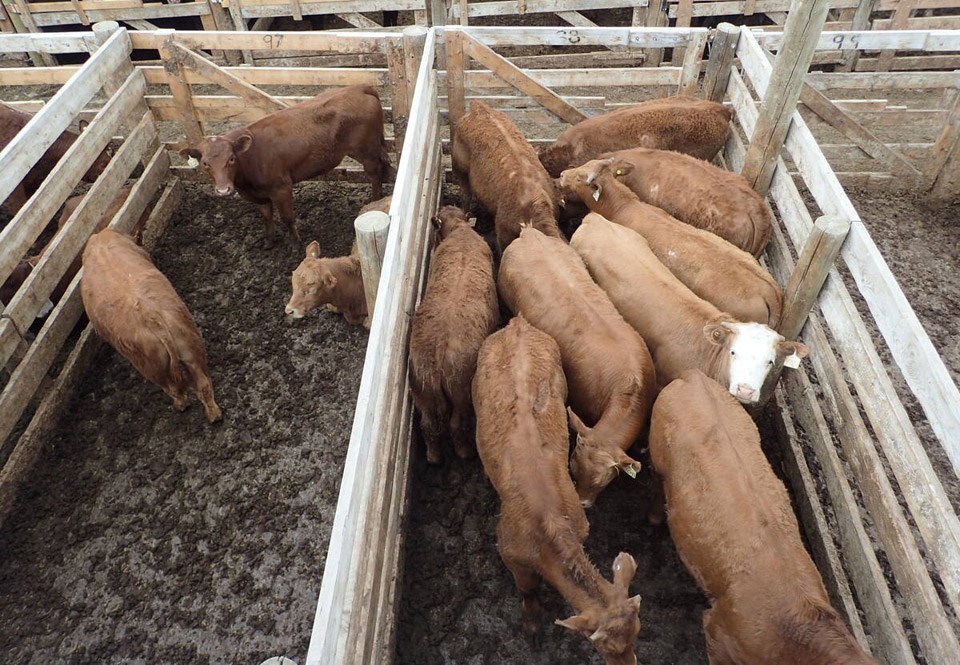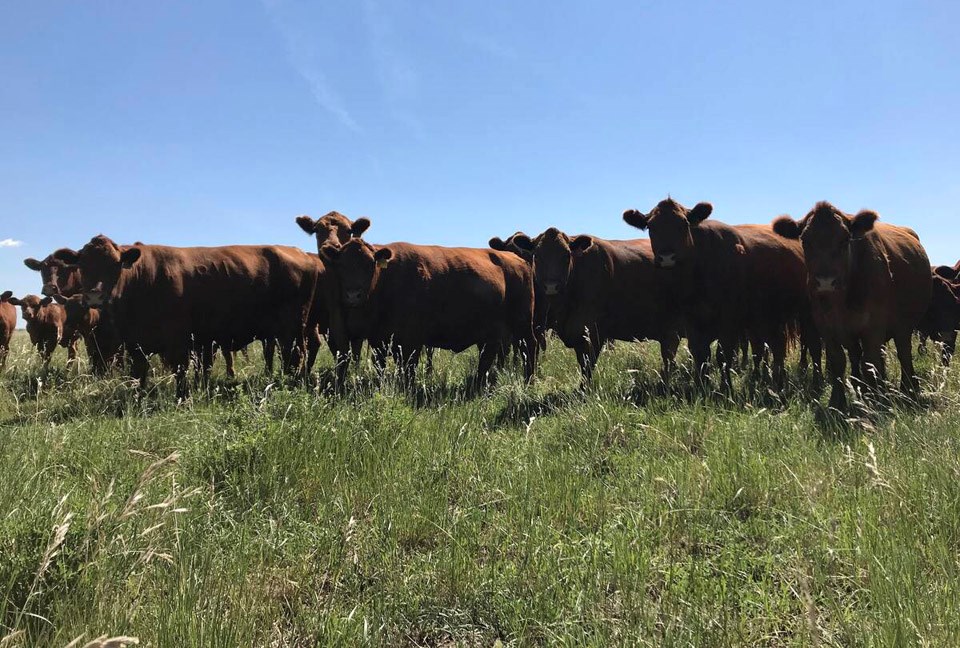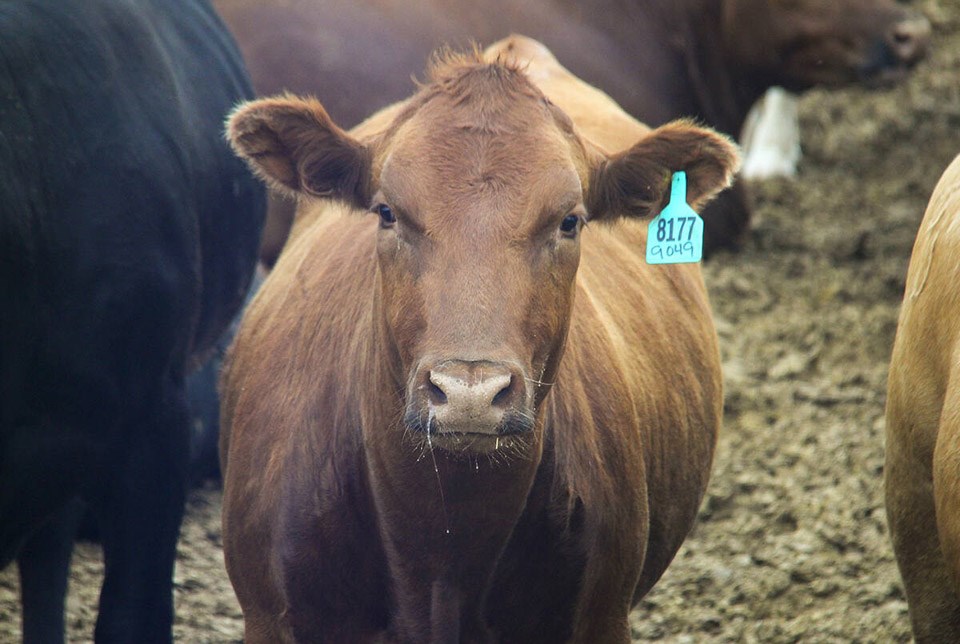ALBERTAFARMER — Canadian cattle producers are awaiting new federal traceability regulations following a two-year consultation process.
The Canadian Food Inspection Agency , but amendments to the guide are anticipated after they were delayed by the recent federal election.
“We expect that it will happen probably in the first or second quarter of 2026, and after that, there’ll be a one-year soft launch of the enforcement of it,” said Rick Wright, chief executive officer of the Livestock Markets Association of Canada (LMAC).
The journey to implementation has been lengthy but necessary, said Wright, who has served on the Canadian Cattle Identification Agency (CCIA) board of directors for nearly 14 years. The regulations represent what he calls an essential emergency management tool in an era of increased global trade and travel risks.
“With the global trade that we’re doing now and global travel that we have now, the risk of a major disease outbreak is quite a bit higher now than what it was a number of years ago,” Wright said.
“It’s a reality that we need to be prepared because a reactionary response may not get us back into the marketplace fast enough.”

Once Canada’s new traceability regulations are in place, auction marts will be responsible for tagging any untagged animals and documenting any available details about their origin. | File photo/AlbertaFarmer
The updated regulations are designed to strengthen preparedness for disease outbreaks by and introducing new requirements for premises identification.
However, Matthew Atkinson, president of Manitoba Beef Producers, says the repeated delays have created uncertainty in the industry.
“The traceability regulations are a really tough one because they have been brought in and kicked down the road so many times that it’s maybe made some folks not as responsive as it could be to the fact that they are coming,” Atkinson said.
The ongoing uncertainty stems from the regulatory process itself, with producers still waiting for final details.
“So until we see Canada Gazette Two, we don’t know for sure what they are,” Atkinson said.
“It’s hard for us to be prepared until we know just what it is.”
The CCIA, which oversees the national livestock tracking system, has already upgraded its digital tools in anticipation of these changes.
“In October of 2024, we were excited to introduce a redesigned Canadian Livestock Tracking System (CLTS) that would make data entry much simpler,” CCIA general manager Ashley Scott said at the livestock association’s annual convention in Brandon earlier this year.
“The new interface is more user friendly with streamlined screens and processes.”
The revamped system now features an enhanced movement record module and a privacy consent option for lost and found livestock.
“We used to have clients reaching out to CCIA seeking owner information for lost and found livestock,” Scott said. “However, due to privacy legislation, CCIA was not able to share a user’s contact information from the database without consent.”
The new consent feature allows users to permit the identification agency to share contact information specifically for livestock recovery purposes.
In December, the CCIA introduced additional system updates, adding optional fields for departure and arrival dates as well as vehicle identification to help users prepare for forthcoming regulatory requirements.
“We’ve introduced two new optional fields, departure date and arrival date,” Scott said.
“This update helps to improve the tracking of animals during transit.”
The redesigned tracking system includes simplified reporting options for auction marts and assembly yards, reflecting the practical demands of their day-to-day operations.
“The CLTS web portal does provide an additional reporting option these users can report a group move in without specifying individual tag numbers,” Scott said.
“This option is designed to reflect the operational reality at these sites where recording individual takes may not always be feasible.”
 The updated regulations are designed to strengthen preparedness for disease outbreaks by shortening the movement reporting window from 30 days to seven and introducing new requirements for premises identification. | File photo/AlbertaFarmer
The updated regulations are designed to strengthen preparedness for disease outbreaks by shortening the movement reporting window from 30 days to seven and introducing new requirements for premises identification. | File photo/AlbertaFarmer
Once the new regulations are in place, auction marts will be responsible for tagging any untagged animals and documenting any available details about their origin.
The proposed changes also require buyers of approved identifiers, such as ear tags, tail tags and leg bands, to supply the premises identification number of the location where the tags will be used.
Industry representatives emphasize that cattle operations face unique challenges compared to other livestock sectors. The cyclical nature of beef production requires a gradual implementation approach, Atkinson said.
“We’ve really pushed to just recognize we are that very different industry,” he said.
“Our auction marts aren’t even open in the summertime, and we’re a bunch of independent producers, and we start in fall with a big calf run.”
While general cattle producers may not be fully aware of what’s coming, partly due to the extended timeline and multiple delays over the past 15 years, auction markets and assembly yards will play a crucial educational role, Wright said.
“We’re going to be a very important cog in the wheel again, when it comes to the education piece, in educating the producers on what their responsibilities are.”
Anticipated pushback from some producers reminds Wright of the initial resistance when mandatory identification tags were first introduced. He pointed to Australia’s experience as an example of how economic incentives eventually drive adoption.
“When we first started talking about mandatory tags and putting tags in cattle, there was tremendous pushback from the primary producers in Canada, across the board,” Wright said.
“In Australia, animals without lifetime traceability were sold at a considerable discount to those that had lifetime traceability. So, the producers saw an economic advantage.”
The new regulations will position Canada , according to Wright, who recently returned from the Livestock Marketing Association convention in the U.S.
“They are way behind us on traceability and the understanding of traceability, the understanding of the need for a better traceability system,” he said.
“We certainly will be positioning ourselves for a better position in the global market by getting this done.”
The timing is particularly relevant given current trade considerations. Having a robust traceability system provides advantages in international markets, especially as Canada looks to diversify its export destinations, Wright said.
“One of the mainstays that we’ve talked about since the Trump administration has come back into play is being less reliant on the U.S. for our export markets, and certainly having a robust traceability system will give us a little bit of a foot up over some of our other competitors when it comes to trading internationally.”
While the government has committed to a one-year soft launch period focusing on education rather than enforcement, the industry had hoped for a longer transition period, Wright added.
The traceability system extends beyond cattle to all livestock species, with pigs already having established programs and goats and sheep beginning to develop their own systems.
This comprehensive approach is particularly important given the potential for cross-species disease transmission such as with foot-and-mouth disease, Wright said.
“It’s not a matter of if it’s going to come to North America. It’s a matter of when it comes and how prepared are we going to be when it gets here.”
About the author
Miranda Leybourne is a Glacier FarmMedia reporter based in Neepawa, Manitoba with eight years of journalism experience, specializing in agricultural reporting. Born in northern Ontario and raised in northern Manitoba, she brings a deep, personal understanding of rural life to her storytelling.
A graduate of Assiniboine College’s media production program, Miranda began her journalism career in 2007 as the agriculture reporter at 730 CKDM in Dauphin. After taking time off to raise her two children, she returned to the newsroom once they were in full-time elementary school. From June 2022 to May 2024, she covered the ag sector for the Brandon Sun before joining Glacier FarmMedia. Miranda has a strong interest in organic and regenerative agriculture and is passionate about reporting on sustainable farming practices. You can reach Miranda at [email protected].
Related Coverage

